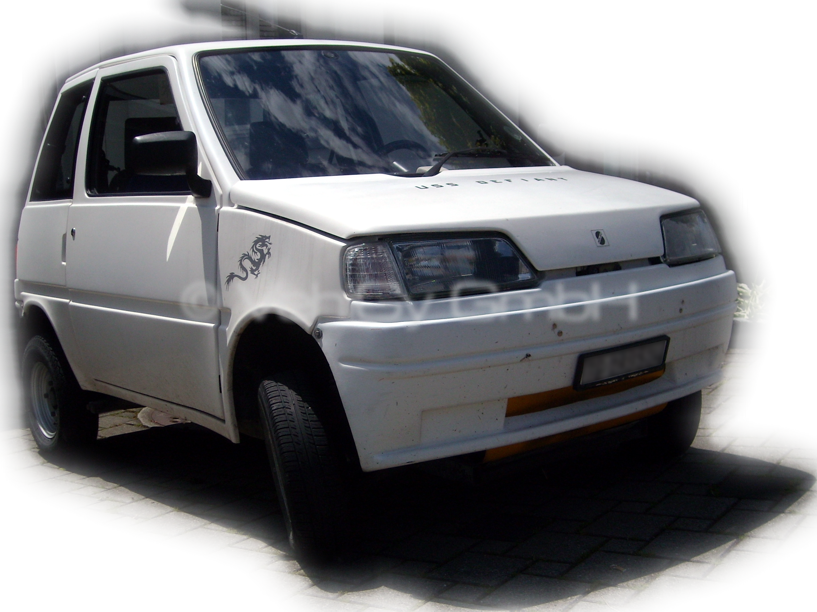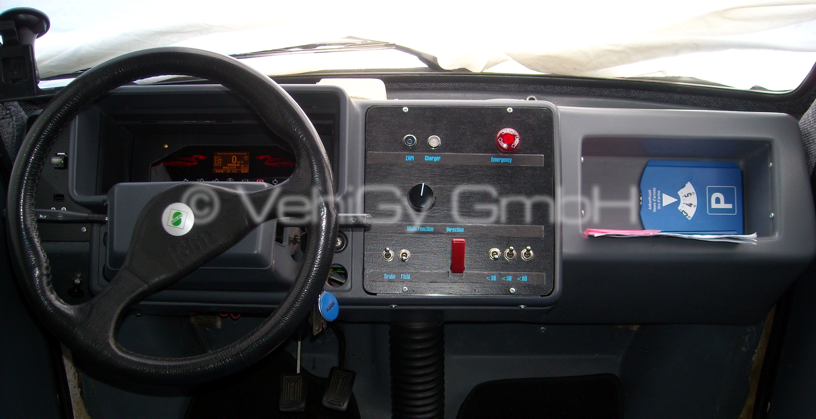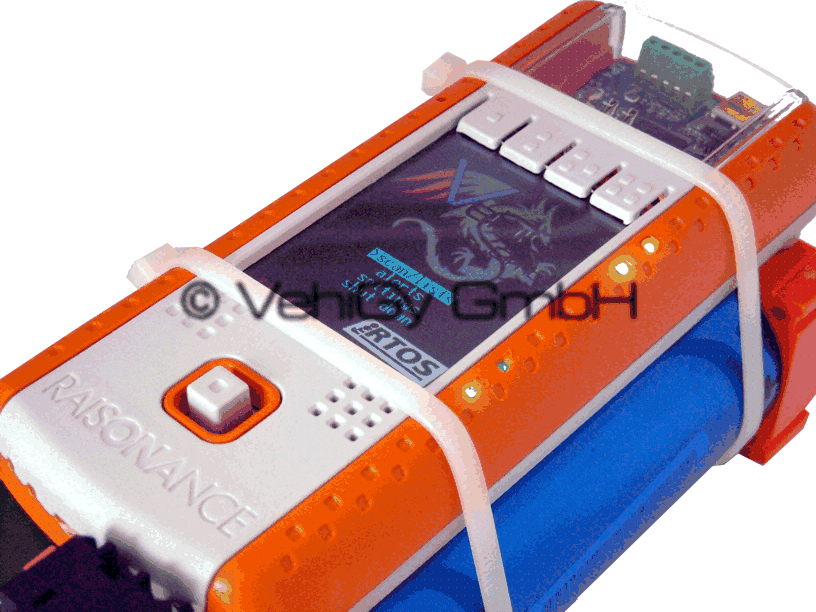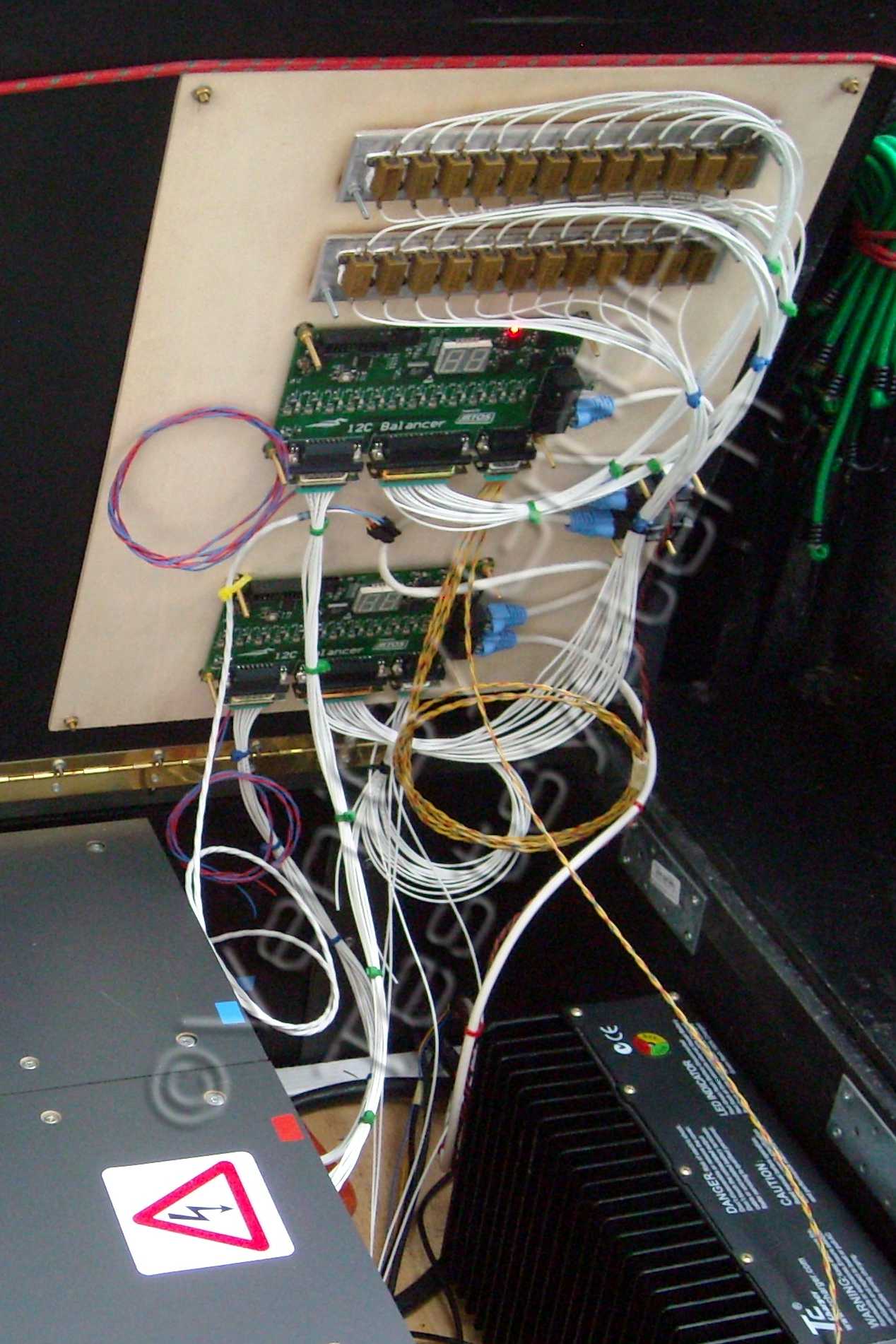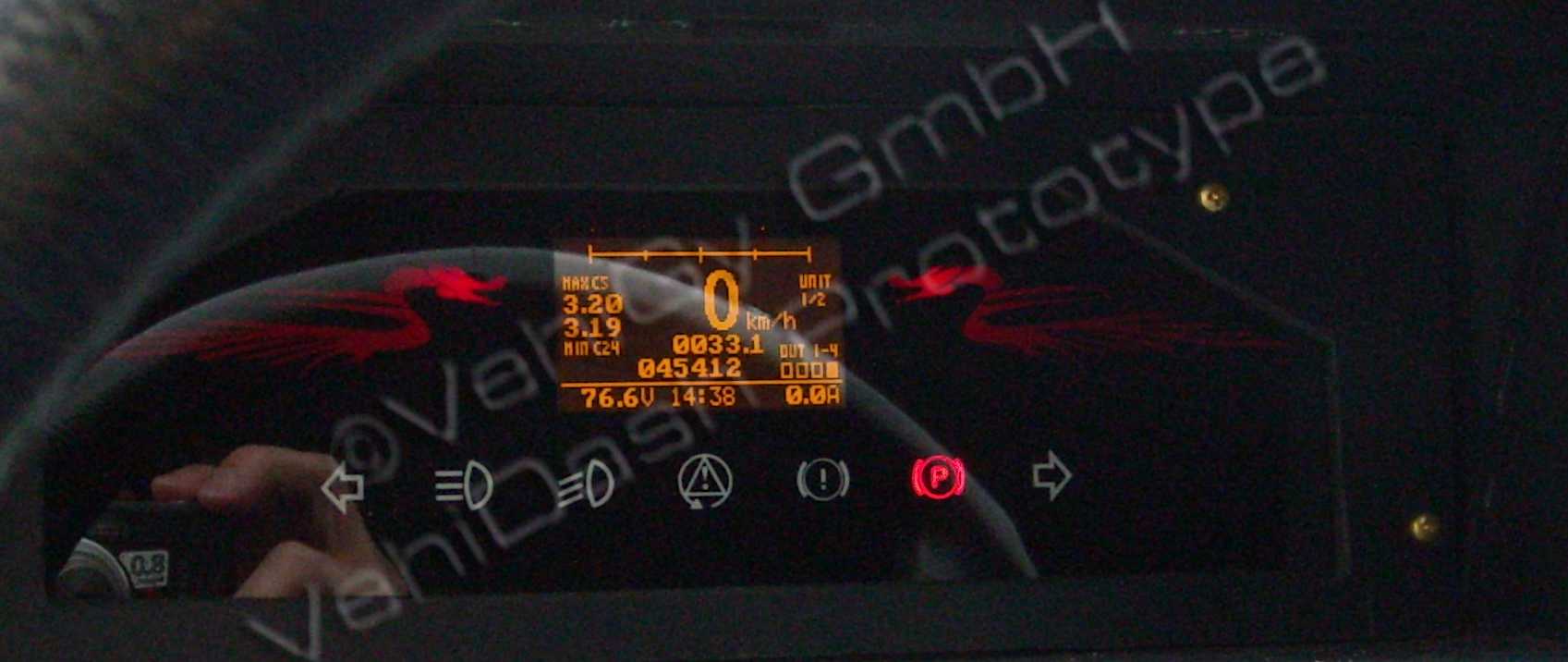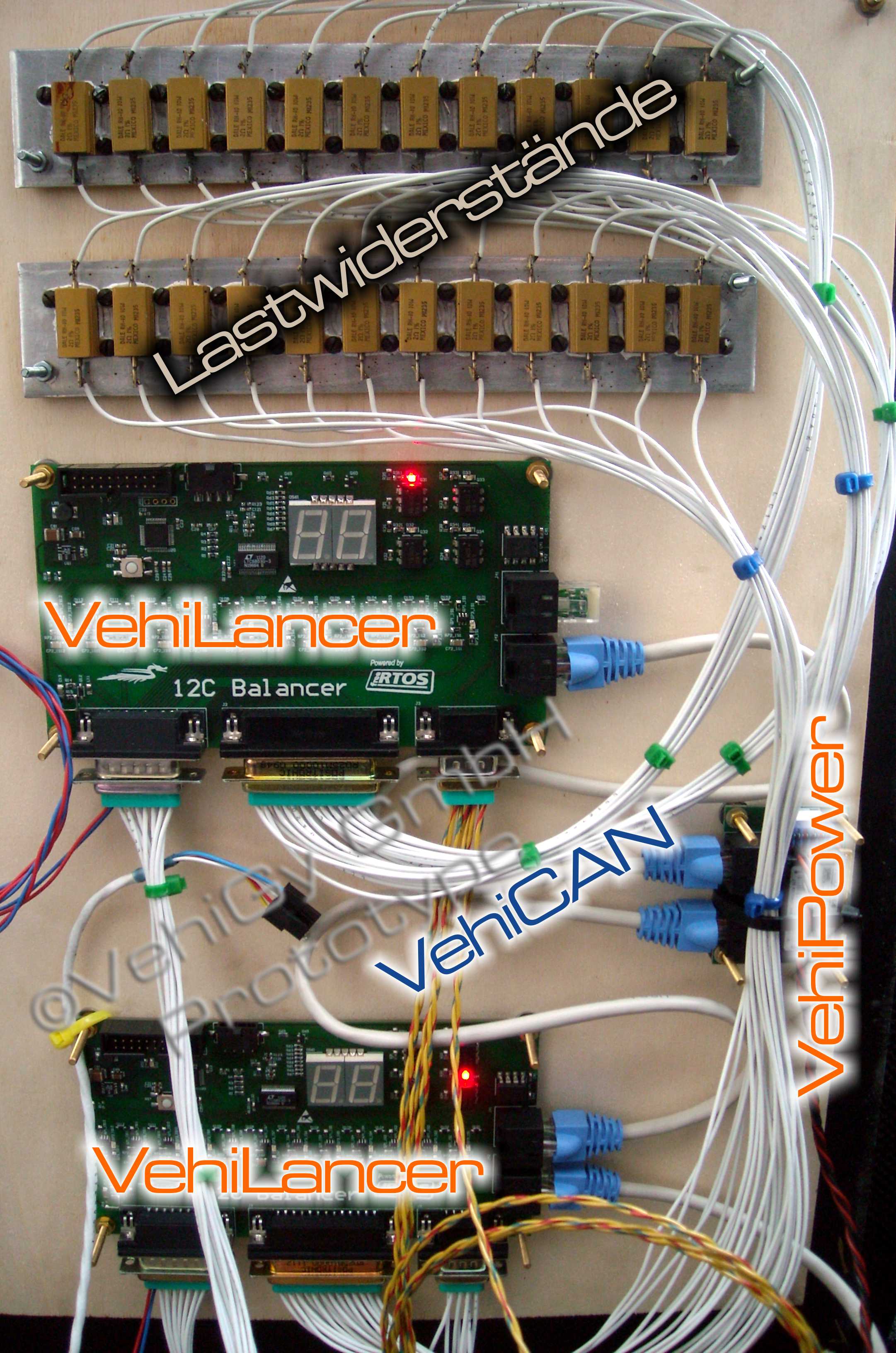Test vehicle USS DEFIANT
This is an old blog post of the original VehiGy GmbH web-page. It dates back to around 2015. The Vehicle (USS DEFIANT) is still in use and underwent several upgrades in the meanwhile. The principal configuration however remained mostly the same except for continuous software upgrades.
With our own test vehicle, the USS DEFIANT, we continuously evaluate our products. The vehicle is in daily use, with a range of only 40km (about 25 miles). The system is pushed to its limits because we are forced to regularly charge the batteries.
The main battery is divided into two blocks, each block containing 12 cell-modules in series, each module containing 6 single LiFePO4 cells (10Ah) in parallel. Thus the nominal voltage is 72V with a capacity of 60Ah. Each block is monitored by one RiseonBMS, which in turn are connected to each other by the CAN bus. As the CAN bus is by design completely isolated from the modules it is necessary to power it by means of an additional component, the VehiPower. The CAN bus is also routed to the cockpit where it connects to the VehiDash. It completely replaces the original dashboard and is certified for use on public roads.
A CAN bus port is easily accessible which allows quick re-configuration and diagnostics by hooking up the VehiLyzer.
System Overview
This picture presents the heart of the entire BMS. The two RiseonBMS can easily be spotted, still bearing the obsolete name "12C Balancer".
The RiseonBMS are basically completely independent units capable of monitoring up to 12 cells. During the charging process the module will take care of each cell individually protecting it against over-charging. This is possible because the RiseonBMS may directly control the charger, reduce its charging current, or shut it off all together. Any superfluous energy is dissipated through external high power resistors (seen in the top area of the image).
The test vehicle is equipped with a prototype of the VehiDash. The driver may easily glance at all the important values concerning the battery. One set of values that has shown to be of particular interest are the maximal and minimal cell voltages. The graphical user interface is still under heavy development, this picture only illustrates the principle and basic feasibility.
This picture gives again a more detailed overview of the 24 cell system. The monitored battery is composed of two blocks of 12 LiFePO4 cells in series each. The two RiseonBMS are connected through the CAN bus. The bus is also connected to the dash board - the VehiDash. Furthermore diagnostics tools - the VehiLyzer for instance - may be hot plugged to the system. The VehiLyzer is used to configure various parameters such as balancer voltage, end-of-charge current, low-voltage, etc..
The CAN bus forming the backbone of the VehiGy System (now Riseon Power Technologies AG system) as well as the exhaustive configuration possibilities of the RiseonBMS are the foundation of our highly flexible and modular system aiming to fulfill the ever growing requirements of a modern energy storage device.
Copyright © 2014 - 2024, Riseon Power Technologies AG, all rights reserved
